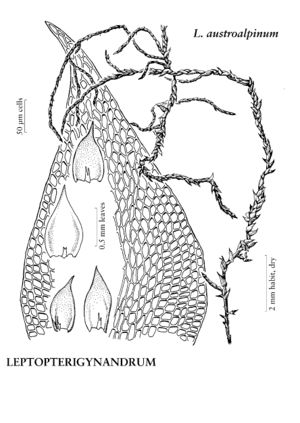Difference between revisions of "Leptopterigynandrum austroalpinum"
Hedwigia 36: 114. 1897.
FNA>Volume Importer |
FNA>Volume Importer |
||
| Line 9: | Line 9: | ||
|special_status={{Treatment/ID/Special_status | |special_status={{Treatment/ID/Special_status | ||
|code=F | |code=F | ||
| − | |label= | + | |label=Illustrated |
}} | }} | ||
|basionyms= | |basionyms= | ||
| Line 35: | Line 35: | ||
-->{{#Taxon: | -->{{#Taxon: | ||
name=Leptopterigynandrum austroalpinum | name=Leptopterigynandrum austroalpinum | ||
| − | |||
|authority=Müller Hal. | |authority=Müller Hal. | ||
|rank=species | |rank=species | ||
| Line 48: | Line 47: | ||
|publication title=Hedwigia | |publication title=Hedwigia | ||
|publication year=1897 | |publication year=1897 | ||
| − | |special status= | + | |special status=Illustrated |
| − | |source xml=https://jpend@bitbucket.org/aafc-mbb/fna-data-curation.git/src/ | + | |source xml=https://jpend@bitbucket.org/aafc-mbb/fna-data-curation.git/src/f50eec43f223ca0e34566be0b046453a0960e173/coarse_grained_fna_xml/V28/V28_540.xml |
|genus=Leptopterigynandrum | |genus=Leptopterigynandrum | ||
|species=Leptopterigynandrum austroalpinum | |species=Leptopterigynandrum austroalpinum | ||
Revision as of 21:15, 16 December 2019
Stems julaceous when dry; pseudoparaphyllia foliose. Leaves 1–1.5(–2) mm; base slightly decurrent; apex very slender; alar cells in many rows extending up margin; laminal cells 20–26(–34) × (7–)10(–13) µm.
Habitat: Non-calcareous, vertical rock faces, soil in rock crevices
Elevation: moderate elevations
Distribution

Alaska, Colo., N.Mex., Mexico (Veracruz), South America (Argentina, Bolivia, Peru), Eurasia, Africa (Lesotho).
Discussion
Leptopterigynandrum austroalpinum resembles species of Pseudoleskeella and grows in similar habitats. However, the leaves are more appressed, never catenulate, and the laminal cells are several times longer than wide. The tiny papillae are difficult to see without an oil immersion lens. In Colorado, this species does not appear to be especially rare, but may easily be mistaken for the common P. tectorum. Revisionary studies are needed to establish the distinctness of the six Asiatic taxa, all of which may well be identical to the one from the Western Hemisphere.
Selected References
None.
